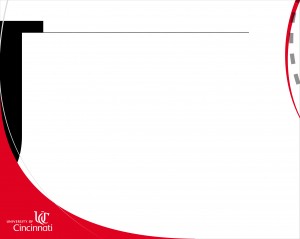Bio:
For almost a century, the Department of Classics at UC has led archaeological expeditions at some of the most important sites in the Mediterranean. Fieldwork at Troy, Pompeii, Knossos, Pylos, Cyprus, and Kea involves large, international teams and produces equally large datasets. These include: archaeological observations, databases, mapping both Computer Aided Design (CAD) and Geographical Information Systems (GIS), hand-drawn plans, finds analyses, and a great deal of imagery. For the past two decades, John Wallrodt, now a Senior Research Associate for the Department has been charged with organizing the creation, curation, and dissemination of that data for the researchers on the projects. Currently he is working on allowing more permanent access to over 3TB of data from those various archaeological field projects.
Highlight of EA’s research interests
John Wallrodt’s interests include the re-examination of the means by which we record our archaeological observations. This includes both proper metadata documentation of paper-born data from the twentieth century (and the digital dissemination of that paper) to digital-born data in the twenty first century. This involves tying together an ever-growing range of immediate archaeological field observations, but also the ever increasing amount of post-excavation analyses by various object, conservation, and environmental specialists.
Why are you considering using Scholar and what value does it have for your current and future research?
Access to pre-publication archaeological data has traditionally been very limited. Various results of the research are handed out to team members for publication and these publications become very important for RPT criteria and career advancement. Combine that with the often decades long wait for full publication from a project and this becomes a nightmare for anybody outside of the project who wants to query the data for themselves. There has been a greater call for projects to place their data in repositories either after publication or even during, so that the greater archaeological community can use that data as comparanda for their own research. This pilot project is the fully published Durres Regional Archaeological Project (DRAP), a surface survey project conducted in Albania in 2001. He hopes to have all digital and analog (scanned) data uploaded to Scholar in the near future.
While John has been involved in the planning, fieldwork, research, and publication of these various projects, he has not had the ability to add ‘full dissemination of raw data’ to that workflow. In pre-computer days, when a project was published, the documents were deposited in a room with the hopes that someone will protect them in case they are needed again. The early digital projects did the same thing. The files were simply copied to a large hard drive or server and then left on their own. A few projects would create their own research web silos for their own needs as a way to distribute their data but those are idiosyncratic, don’t speak well together, and might rely on software that will no longer work with upgraded hardware. The Scholar approach will alleviate all of that. While it might not offer a true ‘online database’ experience with the archaeological data (linking descriptions of artifacts with photographs, for example), it does allow the creation of a single source for a digital repository of all the Department’s completed (and he hopes someday ongoing) archaeological field work.
What value does it have for current and future teaching needs?
One of the Department’s field projects: the Pylos Regional Archaeological Project (PRAP) has been online since the late 1990s. PRAP was a surface survey project similar to the DRAP project of our pilot project. The PRAP website has been used by various departments all over the world as part of their curriculum for survey methodology, land use patterns, population movements, as well as social and political power in Greece. The addition of the rest of the raw data and GIS maps particularly, will allow an entire new generation of students the ability to query the data, play with the numbers, and experiment with new statistical methods to define new patterns for research.
Do you have any additional comments about Scholar?
There is not a large body of archaeological material with attached DOIs. The depth of the data that is planned for inclusion in Scholar will result in DOIs that will be used by early adopters of Linked Open Data to use Scholar as a source for more information about any number of topics relating to the study of the ancient world. And the Department’s nearly 100 years of such records will certainly contribute to works on the development of the archaeological discipline.
________________________________________
Scholar@UC preserves the scholarly output of the University of Cincinnati. Use Scholar@UC to preserve your work and increase its accessibility to a global audience. To get started with Scholar@UC, visit scholar.uc.edu or email scholar@uc.edu.



